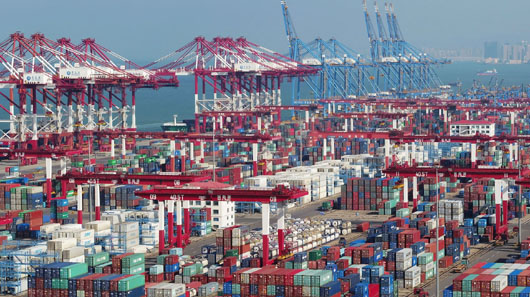by WorldTribune Staff, January 22, 2019
China has reportedly offered to eliminate its current trade imbalance with the United States by increasing imports of U.S. goods by a combined value of more than $1 trillion over a six-year period.
The offer was made during three days of trade talks between U.S. officials and their Chinese counterparts in Beijing earlier this month, according to a Jan. 18 report by Bloomberg.

Discussions over the offer are set to continue at the end of January, when Chinese Vice Premier Liu He is scheduled to travel to Washington.
The Wall Street Journal reported that U.S. Treasury Secretary Steven Mnuchin discussed lifting some or all tariffs imposed on Chinese imports and suggested offering a tariff rollback during the trade discussions scheduled for Jan. 30.
China had offered similar commitments on a smaller scale during talks in Washington last May. That offer was scrapped by U.S. President Donald Trump.
Under the new offer, China would reduce its trade surplus to zero by 2024, Bloomberg reported, citing officials familiar with the negotiations. The surplus stood at $323 billion last year.
For its part, the Trump administration has urged China to take steps to protect U.S. intellectual property and end policies that force American companies to turn over technology to a Chinese partner.
China, however, continues to play down the U.S.’s concerns over intellectual property abuses, and has rejected accusations that foreign companies face forced technology transfers.
“Over the years, China has used the offer of purchasing more technologies with national security applications as a gambit in trade negotiations,” said Tom Orlik, the chief economist for Bloomberg Economics. “That’s always been unacceptable to the U.S. because of the strategic costs.”
China’s top imports from the United States last year included airplanes, soybeans and automobiles.
“If China switches its imports from other countries to the U.S. – less Brazilian soybeans, more U.S. soybeans – that might help deal with their bilateral problem with the U.S., but at the expense of worsening imbalances with other countries,” Orlik said.
Analysts say it would also take a huge investment from U.S. farmers and companies to meet increased Chinese demand.
For soybeans, more land dedicated to growing the crop and storage capacity would be needed. For liquefied natural gas (LNG), it would require building more export terminals. For airplanes, it would likely mean Boeing adding a new manufacturing facility.
Check Out Geostrategy-Direct __________ Jump Start the U.S. Media
